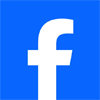Reading time: 10 min
It was in the month of May. The wind was still cold, but spring had come, said the trees and the bushes, the fields and the meadows. Everywhere flowers were budding into blossom; even the hedges were alive with them. Here spring spoke about herself. It spoke from a little apple tree, from which hung a single branch so fresh and blooming, and fairly weighed down by a glorious mass of rosy buds just ready to open.
Now this branch knew how lovely it was, for that knowledge lies in the leaf as well as in the flesh, so it wasn’t a bit surprised when one day a grand carriage stopped in the road beside it, and the young Countess in the carriage said that this apple branch was the most beautiful she had ever seen-it was spring itself in its loveliest form. So she broke off the apple branch and carried it in her own dainty hand, shading it from the sun with her silk parasol, as they drove on to her castle, in which there were lofty halls and beautifully decorated rooms. Fleecy-white curtains fluttered at its open windows, and there were many shining, transparent vases full of beautiful flowers. In one of these vases, which looked as if it were carved of new-fallen snow, she placed the apple branch, among fresh green beech leaves-a lovely sight indeed.
And so it happened that the apple branch grew proud, and that’s quite human.
All sorts of people passed through the rooms, and according to their rank expressed their admiration in different ways. Some said too much, some said too little, and some said nothing at all. And the apple branch began to realize that there were differences in people as well as in plants.
„Some are used for nourishment, some are for ornament, and some you could very well do without,“ thought the apple branch.
From its position at the open window the apple branch could look down over the gardens and meadows below, and consider the differences among the flowers and plants beneath. Some were rich, some were poor, and some were very poor.
„Miserable, rejected plants,“ said the apple branch. „There is a difference indeed! It’s quite proper and just that distinctions should be made. Yet how unhappy they must feel, if indeed a creature like that is capable of feeling anything, as I and my equals do; but it must be that way, otherwise everybody would be treated as though they were just alike.“
And the apple branch looked down with especial pity on one kind of flower that grew everywhere in meadows and ditches. They were much too common ever to be gathered into bouquets. They could be found between the paving stones. They shot up like the rankest and most worthless of weeds. They were dandelions, but people have given them the ugly name, „the devil’s milk pails.“
„Poor wretched outcasts,“ said the apple branch. „I suppose you can’t help being as common as you are, and having such a vulgar name! It’s the same with plants as with men-there must be a difference.“
„A difference?“ repeated the sunbeam, as it kissed the apple branch; but it kissed the golden „devil’s milk pails,“ too. And all the other sunbeams did the same, kissing all the flowers equally, poor as well as rich.
The apple branch had never thought about our Lord’s infinite love for everything that lives and moves in Him, had never thought how much that it is good and beautiful can lie hidden but still not be forgotten; and that, too, was human.
But the sunbeam, the ray of light, knew better. „You don’t see very clearly. You are not very farsighted. Who are these outcast flowers that you pity so much?“
„Those devil’s milk pails down there,“ replied the apple branch. „Nobody ever ties them up in bouquets; they’re trodden under foot, because there are too many of them. And when they go to seed they fly about along the road like little bits of wool and hang on people’s clothes. They’re just weeds! I suppose there must be weeds too, but I’m certainly happy and grateful that I’m not like one of them!“
Now a whole flock of children ran out into the meadow to play. The youngest of them was so tiny that he had to be carried by the others. When they set him down in the grass among the golden blossoms, he laughed and gurgled with joy, kicked his little legs, rolled over and over, and plucked only the yellow dandelions. These he kissed in innocent delight.
The bigger children broke off the flowers of the dandelions and joined the hollow stalks link by link into chains. First they would make one for a necklace, then a longer one to hang across the shoulders and around the waist, and finally one to go around their heads. It was a beautiful wreath of splendid green links and chains.
But the biggest of the children carefully gathered the stalks that had gone to seed, those loose, aerial, woolly blossoms, those wonderfully perfect balls of dainty white plumes, and held them to their lips, trying to blow away all the white feathers with one breath. Granny had told them that whoever could do that would receive new clothes before the year was out. The poor, despised dandelion was considered quite a prophet on such occasions.
„Now do you see?“ asked the sunbeam. „Do you see its beauty and power?“
„Oh, it’s all right-for children,“ replied the apple branch.
Now an old woman came into the meadow. She stooped and dug up the roots of the dandelion with a blunt knife that had lost its handle. Some of the roots she would roast instead of coffee berries, others she would sell to the apothecary to be used as drugs.
„Beauty is something higher than this,“ said the apple branch. „Only the chosen few can really be allowed into the kingdom of the beautiful; there’s as much difference between plants as between men.“
Then the sunbeam spoke of the infinite love of the Creator for all His creatures, for everything that has life, and of the equal distribution of all things in time and eternity.
„That’s just your opinion,“ replied the apple branch.
Now some people came into the room, and among them was the young Countess who had placed the apple branch in the transparent vase. She was carrying a flower-or whatever it was-that was protected by three or four large leaves around it like a cap, so that no breath of air or gust of wind could injure it. She carried it more carefully and tenderly than she had the apple branch when she had brought it to the castle. Very gently she removed the leaves, and then the apple branch could see what she carried. It was a delicate, feathery crown of starry seeds borne by the despised dandelion!
This was what she had plucked so carefully and carried so tenderly, so that no single one of the loose, dainty, feathered arrows that rounded out its downy form should be blown away. There it was, whole and perfect. With delight she admired the beautiful form, the airy lightness, the marvelous mechanism of a thing that was destined so soon to be scattered by the wind.
„Look how wonderfully beautiful our Lord made this!“ she cried. „I’ll paint it, together with the apple branch. Everybody thinks it is so extremely beautiful, but this poor flower is lovely, too. It has received as much from our Lord in another way. They are very different, yet both are children in the kingdom of the beautiful!“
The sunbeam kissed the poor dandelion, and then kissed the blooming apple branch, whose petals seemed to blush a deeper red.
 Learn languages. Double-tap on a word.Learn languages in context with Childstories.org and Deepl.com.
Learn languages. Double-tap on a word.Learn languages in context with Childstories.org and Deepl.com.Backgrounds
Interpretations
Adaptions
Summary
Linguistics
„There is a difference“ is a lesser-known fairy tale written by Danish author Hans Christian Andersen. Andersen was born on April 2, 1805, in Odense, Denmark, and died on August 4, 1875, in Copenhagen. He is best known for his collection of fairy tales, which have been translated into over 125 languages and continue to be cherished by children and adults alike.
Hans Christian Andersen’s stories often convey moral lessons or touch upon deep, philosophical themes. Many of his tales have a timeless quality and incorporate elements of folklore, fantasy, and reality, making them appealing to a wide range of audiences.
In the case of „There is a difference,“ the story focuses on themes such as beauty, pride, diversity, and the value of all living things. Andersen’s tales often promote compassion, empathy, and understanding, encouraging readers to examine their own perspectives and be more open-minded.
Although the story doesn’t have a specific historical or cultural background, it can be seen as a reflection of Andersen’s own beliefs and values. As a writer who was often concerned with issues of social justice and human rights, Andersen used his stories to convey important moral messages and inspire change in his readers‘ attitudes and behaviors.
„There is a difference“ by Hans Christian Andersen offers several interpretations, with the key themes revolving around beauty, pride, and the appreciation of diversity.
The subjectivity of beauty: The story highlights that beauty is subjective and can be found in the most unexpected places. While the apple branch views itself as superior to the dandelions, the Countess finds beauty in both. This interpretation encourages readers to appreciate the unique beauty of everything around them and not judge based on preconceived notions or societal standards.
Pride and humility: The apple branch’s pride in its own beauty leads it to look down on other plants, specifically the dandelions. The story serves as a reminder that pride can cloud one’s judgment and prevent them from recognizing the beauty and value in others. It emphasizes the importance of humility and being open to seeing the worth in all living things.
Appreciation of diversity: The tale conveys the message that differences among people and living things should be celebrated and appreciated, rather than being used as a basis for judgment or discrimination. It encourages readers to embrace diversity and understand that the world is richer and more beautiful because of these differences.
The Creator’s love and equality: Through the sunbeam’s teachings, the story emphasizes the Creator’s infinite love for all living creatures, regardless of their appearance or societal value. This interpretation calls for readers to recognize that all living things have been created equal and are deserving of love and respect.
The transformative power of understanding: The story suggests that by understanding and acknowledging the beauty and value in all living things, one can transform their perspective and become more compassionate and empathetic. The Countess’s appreciation of both the apple branch and the dandelion symbolizes this transformation and shows the importance of understanding and empathy in fostering a more inclusive and harmonious world.
The fairy tale „There is a difference“ by Hans Christian Andersen has inspired many adaptations in various forms of media. Here are some examples.
Animated Films: The story has been adapted into several animated films, including „The Drop of Water“ by Aleksandr Petrov and „There is a Difference“ by Fairy Tales Animated.
Children’s Books: Several children’s books have been written based on the story, such as „The Old House“ by Pamela Duncan Edwards and „The Drop of Water“ by Catherine Asaro.
Artwork: Many artists have created artwork inspired by the story, such as Edmund Dulac’s illustrations in „Stories from Hans Andersen“ and Arthur Rackham’s illustrations in „Fairy Tales of Hans Christian Andersen.“
Theater: The story has been adapted for the stage, such as the play „The Drop of Water“ by Mary Dunne and the puppet show „The Old House“ by the Kilkenny Puppetry Festival.
Music: The story has also inspired musical adaptations, such as the song „The Drop of Water“ by Eikichi Yazawa and the opera „The Old House“ by Philip Glass.
Overall, the enduring themes of „There is a difference“ continue to inspire many adaptations, showcasing the power and impact of Hans Christian Andersen’s storytelling.
In Hans Christian Andersen’s fairy tale, „There is a difference,“ an apple branch blossoms during spring and catches the eye of a young Countess, who breaks it off and brings it to her castle. The apple branch, realizing its beauty, grows proud and begins to notice differences among people and plants. It looks down on dandelions, which it sees as common and undesirable weeds, while it views itself as superior and beautiful.
As the sunbeam kisses all the flowers, it teaches the apple branch about the Creator’s infinite love for all living things. The apple branch, however, remains unconvinced. One day, the Countess brings a carefully protected dandelion’s seed head to the castle and expresses her admiration for its beauty and unique features. She decides to paint both the apple branch and the dandelion, acknowledging that both are children in the kingdom of the beautiful.
This tale serves as a reminder that beauty can be found in all things, and that the Creator’s love is equal and infinite. It encourages readers to be more open-minded, appreciate diversity, and recognize the inherent beauty and value in all living creatures.
This fairy tale by Hans Christian Andersen, „There is a Difference,“ uses the anthropomorphization of plants to explore themes of social hierarchy, beauty, and the inherent value of all living things. Through linguistic analysis, we can tease out the layers of meaning in Andersen’s story.
1.
Anthropomorphism: The apple branch and dandelion are given human characteristics, such as pride and an ability to engage in social judgment, to illustrate different responses to the external world’s perception. The apple branch becomes an allegory for human vanity and class consciousness, representing individuals who view themselves as superior due to their societal status or external beauty.
2.
Contrast and Irony: Andersen sets up a contrast between the apple branch’s perception of itself as superior and the dandelion’s perceived inferiority. The apple branch looks down on the dandelions for being common and ubiquitous, which mirrors societal class distinctions. The irony arises when the dandelion, despite its low status, brings joy to children and holds practical value for the old woman. The apple branch’s arrogance is juxtaposed with the dandelion’s overlooked beauty and utility, challenging the superficial valuation of worth.
3.
Symbolism:
–
Apple Branch: Represents those who are privileged, admired, and socially elevated. Its beauty and position in the vase symbolize elitism.
Dandelion: Symbolizes the common, overlooked, and undervalued. Despite this, it demonstrates a quiet strength and value, providing joy to children and practical use to adults.
Sunbeam: Acts as a metaphor for divine or enlightened perspective, offering a non-judgmental, egalitarian view of all living things. It represents the notion of universal love and equality in the eyes of the Creator.
4.
Themes of Equality and Universal Love: Through the sunbeam’s indiscriminate affection for both the apple branch and the dandelion, Andersen communicates a theme of universal beauty and intrinsic worth. The Creator’s love doesn’t discriminate between the so-called high and low, suggesting that all entities, regardless of social status, possess their own unique beauty and purpose.
5.
The Role of Human Perception: The story critiques human tendencies to categorize and rank based on external appearances or societal status. Andersen implies that such judgments are shallow and fail to capture the underlying value within every creature. The Countess’s admiration for the dandelion seeds at the story’s end encapsulates the revelation of this deeper appreciation for overlooked beauty.
6.
Language and Tone: Andersen’s language shifts between the condescending attitude of the apple branch and the gentle, enlightened perspective of the sunbeam. The use of dialogue and descriptive passages emphasizes the internal realizations of the characters, as well as the overarching moral that true beauty and worth aren’t solely based on external appearances or societal positions.
Overall, Andersen’s tale gently yet incisively critiques social stratification and extols a vision of egalitarian beauty, urging readers to appreciate the inherent value in all forms of life.
Information for scientific analysis
Fairy tale statistics | Value |
|---|---|
| Translations | DE, DE, EN, DA, ES, IT |
| Readability Index by Björnsson | 32.7 |
| Flesch-Reading-Ease Index | 74.2 |
| Flesch–Kincaid Grade-Level | 7.1 |
| Gunning Fog Index | 9.7 |
| Coleman–Liau Index | 10.1 |
| SMOG Index | 9.6 |
| Automated Readability Index | 7.8 |
| Character Count | 7.381 |
| Letter Count | 5.768 |
| Sentence Count | 77 |
| Word Count | 1.312 |
| Average Words per Sentence | 17,04 |
| Words with more than 6 letters | 205 |
| Percentage of long words | 15.6% |
| Number of Syllables | 1.789 |
| Average Syllables per Word | 1,36 |
| Words with three Syllables | 94 |
| Percentage Words with three Syllables | 7.2% |

 Facebook
Facebook  Whatsapp
Whatsapp  Messenger
Messenger  Telegram
Telegram Reddit
Reddit













